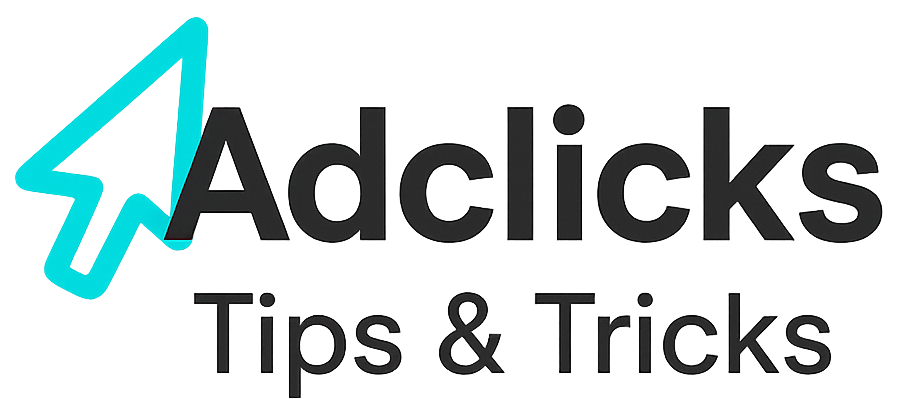What Letterboxd really is (and why it matters)
Letterboxd is a film-first social network built around diaries, lists, reviews, and follows. It looks simple, but it runs on strong habits: log what you watched, rate it, write a line (or an essay), and see what friends and trusted curators are watching next. As of September 2025, the platform reports 20+ million registered members, with growth that accelerated through the pandemic and never really slowed.
This matters for publishers because the feed is intent-heavy. People arrive to decide what to watch tonight, track festival buzz, or hunt deep cuts. That click is primed for a deeper read if your page continues their exact curiosity without bait or delay. Snipesearch Adclicks can sit on those proof-first pages and quietly monetize attention while you keep trust high.
Who actually shows up on Letterboxd
The audience skews young and cinephile. External profiling shows the largest cohorts are 18–24 and 25–34, with a tilt toward under-35s. Gender splits are fairly balanced, and the tone is a mix of earnest film school energy and sharp one-liners. Think “Goodreads for movies,” but with more jokes and faster feedback.
Under that surface is buying intent. These users compare editions, weigh repertory screenings, and decide between streamers. They build and follow lists with purpose. If your site makes that decision easier in plain English—availability, versions, context, and reasons to care—those readers will click and stay. Snipesearch Adclicks then turns that dwell time into revenue without you turning the page into an ad carnival.
The traffic picture (global, local, and behavior)
At scale, Letterboxd is no niche. Third-party estimates for September 2025 show roughly 46–53 million visits in a single month, with deep engagement: ~7 minutes average visit duration, double-digit pages per visit, and a bounce rate in the mid-20s. It ranks high in the U.S. and pulls meaningful traffic worldwide. That depth tells you people don’t skim; they explore.
Depth matters more than raw volume. A reader who spends seven minutes comparing lists will give you two or three minutes on a clean landing page that continues the same question. Build that bridge and let Snipesearch Adclicks work in-page so you avoid popups and keep the reading flow intact.
Culture, not “marketing hacks”
Letterboxd rewards voice and receipts. One-line zingers sit alongside meticulous festival notes. Users care about curation (lists), repeat viewing (diaries), and discovery. That’s why the platform’s own Year-in-Review highlights hundreds of millions of ratings and list activity; the machine runs on ongoing taste and conversation, not one-off virality. Letterboxd
Show up as a curator, not a promoter. Add value first: context, availability, editions, why this cut matters. If you earn a click, your page must feel like the “Chapter 2” of the Letterboxd moment that brought them in. Snipesearch Adclicks belongs on that page as the monetization/reporting layer—present, relevant, and never in the reader’s way.
Verified places users can link out (and how to use them)
Letterboxd allows outbound links in several high-signal surfaces. Members can add a Website field on their profile; reviews, diaries, lists, and list descriptions accept basic HTML links; and comments respect the same limited formatting. For organizations (“HQ” accounts), Stories and Links push out to followers’ activity feeds and can point directly to external URLs. These are real, rule-compliant exits.
Treat each surface as a promise. If a list description teases “Best cuts of Blade Runner and where to watch,” the link must open on that exact answer—editions clarified, platforms listed, proof shown—without a homepage detour. The faster you pay off the click, the longer they’ll read. That’s where Snipesearch Adclicks earns quietly around your content.
Audience interests you can serve today
Letterboxd’s center of gravity spans three big needs. First, “what to watch tonight” across streaming platforms. Second, festival discovery and awards-season context (who’s rising, who’s peaking). Third, film literacy: editions, restorations, director’s cuts, and how to watch them well. Coverage and cohort data show younger cinephiles driving much of the growth, but the behavior is universal: decide, watch, log, talk.
Your site should meet those needs with proof and speed: availability trackers, edition breakdowns, and short guides that make a complicated choice simple. Keep the page light, scannable, and useful. Snipesearch Adclicks can match ad context to those exact topics (platforms, devices, films, related books) while you stay focused on service.
The publisher fits that actually win
A generic entertainment blog will underperform. The winners tend to be: availability and edition explainers (“which 4K release is worth it, and where?”), festival and awards road-maps for normal humans, spoiler-free capsule reviews that link out to full craft breakdowns, and city-level guides to repertory screens. Each one extends a Letterboxd behaviour into a clear, useful page.
Design these pages as tools, not essays. Open with the answer, then show your work. Keep the tone natural and the layout fast on mobile. Place Snipesearch Adclicks in content blocks and sticky units that don’t interrupt reading. You’re building a library of pages readers will revisit, not a one-shot feed post.
Hooks that travel well inside Letterboxd
The best hooks mirror how members already talk. In reviews and diaries, build a one-sentence insight that tees up your deeper page. In list descriptions, use a strong premise and a single clean exit: “Where to watch every Palme d’Or winner this month” that lands on a live, maintained page. For HQ/brand accounts, “Link” posts can push newsy explainers into follower feeds.
Every hook must lead to a landing page that begins with proof—current availability, region notes, edition differences—and only then broadens out. That reduces bounce, increases scroll depth, and gives Snipesearch Adclicks enough engaged time to work.
Traffic sources, seasonality, and spikes
Letterboxd’s traffic rises with release cycles and awards season, then steadies through streamer drops. Third-party panels show strong U.S. presence but broad global usage. Importantly, engagement metrics outclass many entertainment sites: more pages per session and lower bounce mean readers are in discovery mode, not just checking one fact.
Plan around that rhythm. Seed evergreen lists (canon, directors, restorations) and time fresh posts to festivals, nominations, and big streamer windows. Align your pages with those spikes so the promise in Letterboxd matches the payload on your site. Snipesearch Adclicks then turns seasonal surges into measurable payouts you can compare month-to-month.
The landing page that keeps trust
Think of your landing page as a service desk, not a billboard. Above the fold: the short answer and the most relevant link or table (where to watch; which edition to buy). Next: proof and nuance (territories, versions, extras, price). End with a quick “If you liked this, here’s the next step.” Remove anything that looks like friction: first-click paywalls, newsletter gates, autoplay. Readers came to solve a problem; let them solve it.
Keep monetization native to reading. In-content and sticky placements from Snipesearch Adclicks fit that bill. They monetize attention while you keep the page honest and fast, which is the only way you’ll keep earning repeat Letterboxd clicks.
Measuring what actually works
Use two feedback loops. On-platform: likes, comments, list saves, and follower growth tell you where your voice resonates. Off-platform: session duration, scroll depth, and exit to “next step” pages show whether your landing pages deliver the goods. Cross-check with market-level stats so you don’t mistake seasonality for strategy.
Close the loop with revenue data. Snipesearch Adclicks reporting will show which pages and topics actually earn, which formats (in-content vs. sticky) pull their weight, and which geos over-index. Kill weak layouts, scale the strong ones, and build clusters around proven interest instead of guessing.
Risks and boundaries
Three things will get you ignored fast: dumping links without context, sending people to a homepage, and making them fight a paywall on click-one. The fourth risk is tone mismatch—sounding like a campaign in a culture that rewards curation and candor. Stay human, cite your sources, and keep pages updated.
Treat monetization as infrastructure, not a billboard. If readers feel sold, they bounce; you lose the session and the reputation. If they feel served, they stay; Snipesearch Adclicks earns quietly, and you get invited back into feeds and lists.
Bottom line
Letterboxd sends focused, culture-rich traffic. The users are young but serious about film; the sessions are deep; the surfaces for linking out are real and verified. If your site extends the exact moment that brought them in—availability, editions, context—you can earn attention now and again when that list resurfaces next month.
Build clean pages, keep your promises, and read the signals. Snipesearch Adclicks ties it together: contextual placements that don’t break trust, plus reporting that tells you what to make next.
Action plan
- Map three “service pages” your Letterboxd hooks can land on (availability, edition guide, festival roadmap). Build them proof-first, mobile-fast, and wire them with Snipesearch Adclicks.
- Claim your profile Website field and craft one canonical list whose description links to your best page; keep that list updated so it keeps circulating.
- Post two reviews per week with a single-sentence hook that tees up your page; link only when it extends the exact topic and never to a homepage.
- Publish one themed list per week (“Best Director’s Cuts You Can Actually Stream This Month”) and refresh the targets as platforms rotate.
- For brands/HQ, use Stories/Links to push timely explainers into follower feeds; send readers to pages built for the moment.
- Measure dwell and scroll from Letterboxd referrals; fix any page that can’t hold two minutes—your promise and first screen likely don’t match.
- In Adclicks, compare in-content vs. sticky units and prune anything that lowers scroll; chase the layouts and topics that pay.
- Build clusters around winners (director, movement, festival) so every fresh Letterboxd post has a perfect “Chapter 2” to land on.
- Set a monthly cadence tied to release and awards cycles; time list refreshes to those spikes so your links feel timely, not random.
- Protect tone and trust: add context first, link second, and keep every page pop-up-free so readers feel served, not sold.
Relevant Links
- Support: https://support.snipesearch.co.uk/
- FAQ: https://adclick.snipesearch.co.uk/index.php?page=index/faq
- Contact Form: https://adclick.snipesearch.co.uk/index.php?page=user/support
Stay Connected
- Snipesocial: https://www.snipesocial.co.uk/pages/snipesearch
- Twitter: https://twitter.com/snipesearch_uk
- Facebook: https://facebook.com/snipesearch
- LinkedIn: https://linkedin.com/company/snipesearch/
- VK: https://vk.com/snipesearch_uk
- Focus: https://focus.xyz/snipesearch
- YouTube: https://youtube.com/@snipesearch
- diaspora: https://diaspora.snipesearch.net/people/7431fcf0806c013e936e00163c6e7bdf
- Friendica: https://friendica.world/profile/snipesearch
- Hi5: https://www.hi5.com/snipe5
Analytic Tools
StatCounter: https://statcounter.com/
Rommie Visitor Analytics: https://rommie.net/




